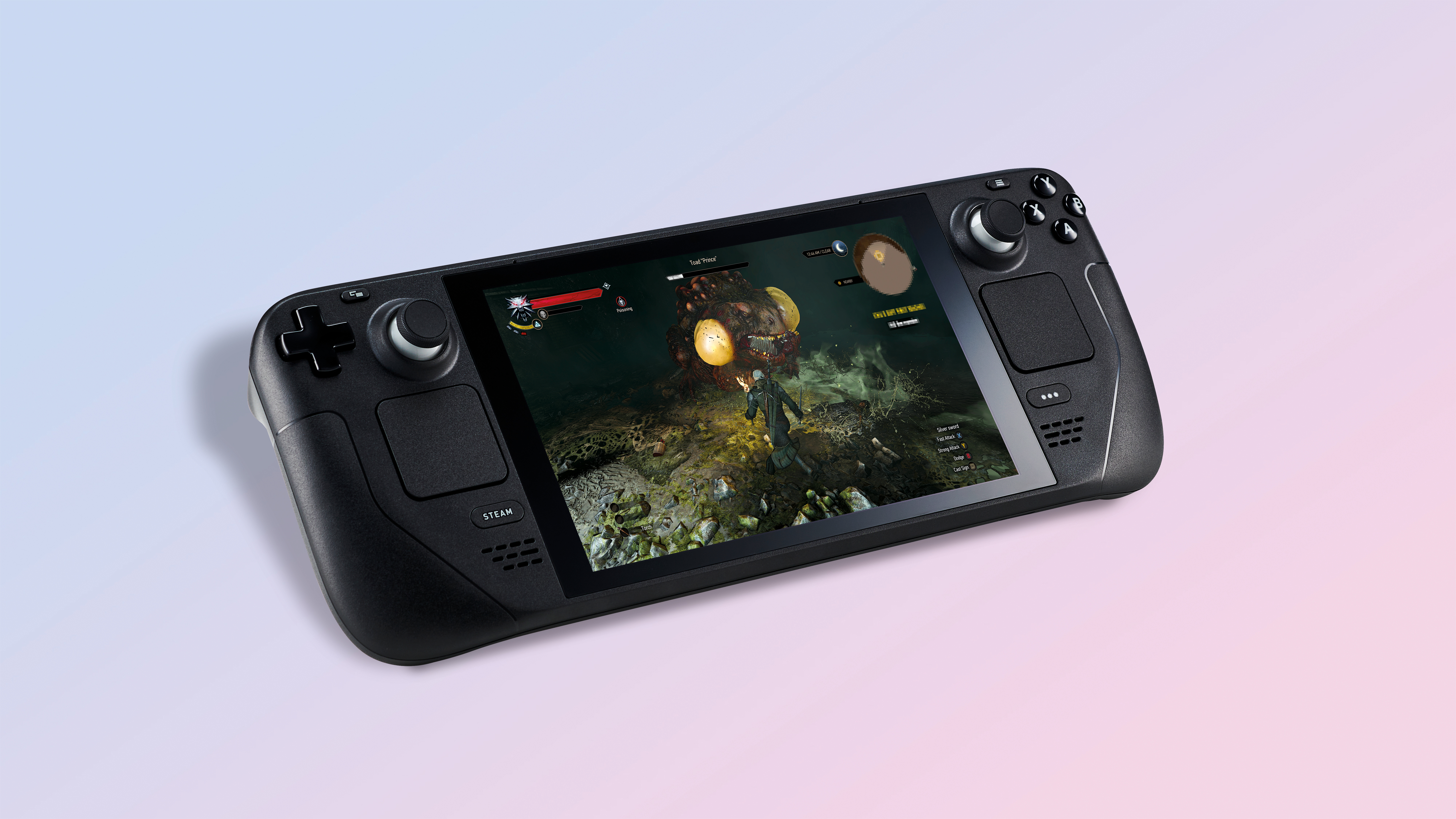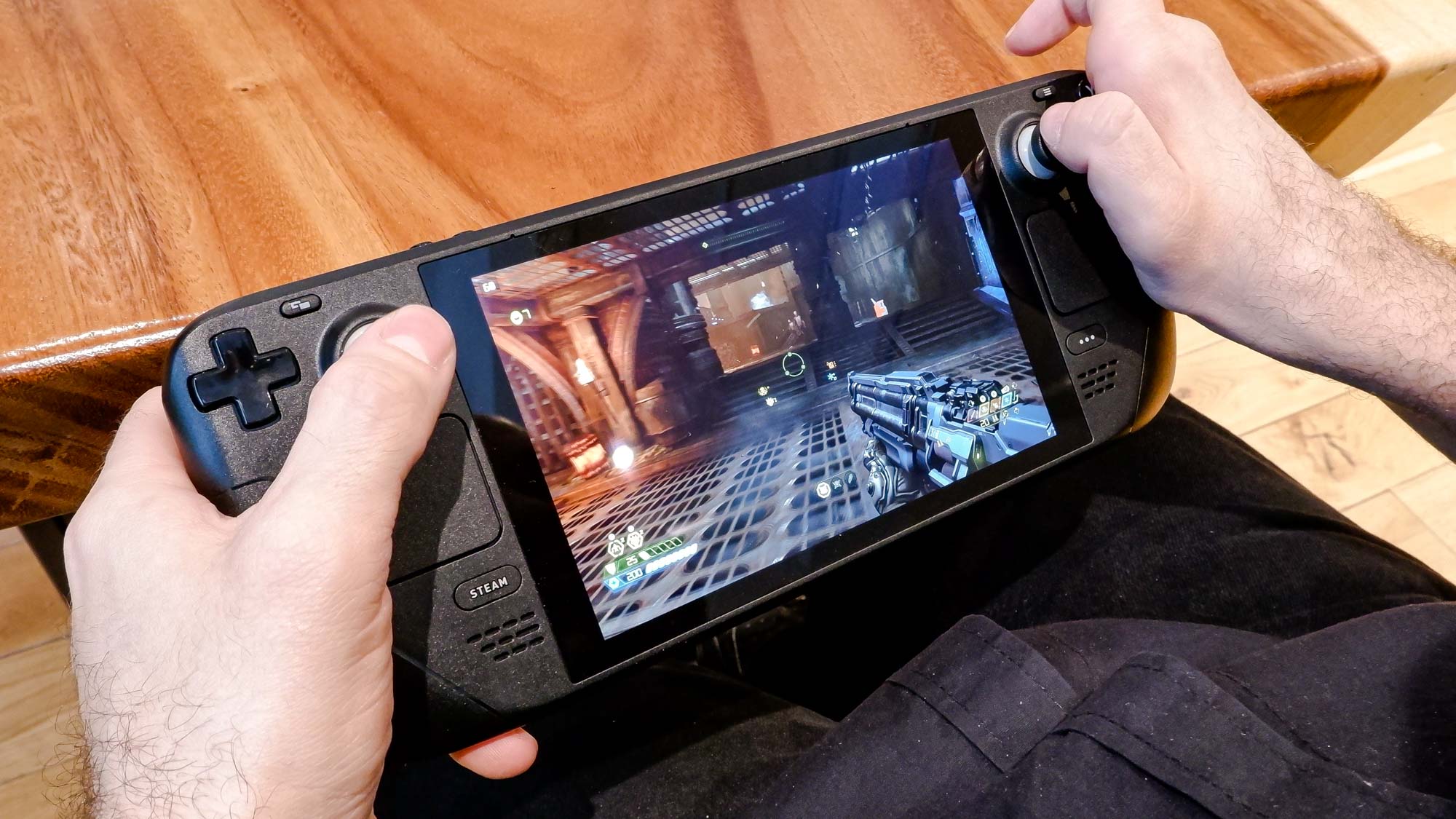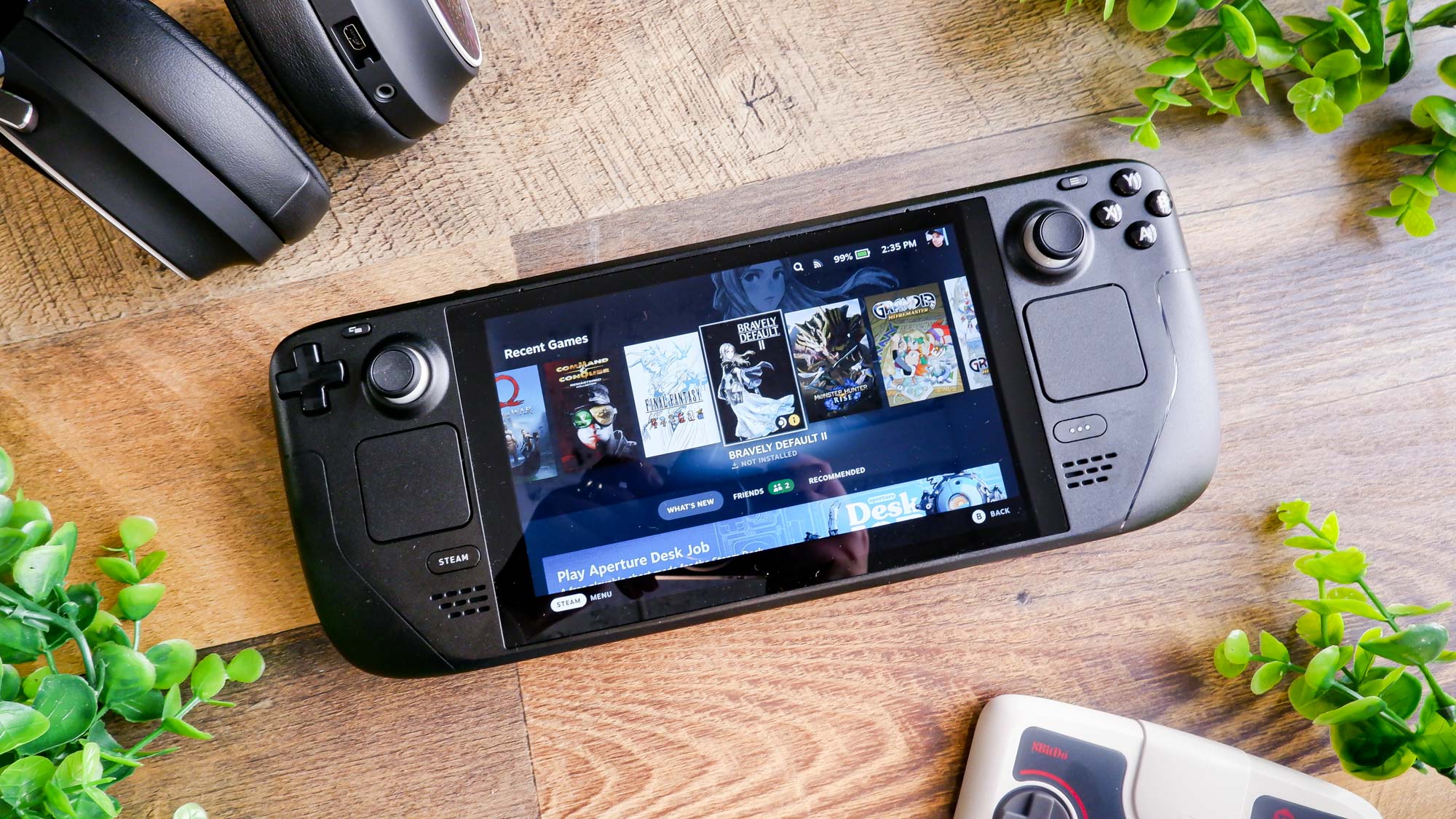I won't buy the Steam Deck until it gets this one upgrade
There are a lot of things to like about the Deck, but its screen isn't one of them

The Steam Deck is easy to admire. Competitively priced and smartly designed, its popularity is actively encouraging more developers to better optimize their games so they can get that ‘Deck Verified’ nod of approval from Valve.
So here's the contrary kicker: I have no current desire to buy the Steam Deck.
I’m not saying this just because I own one of the best gaming PCs that houses an Nvidia GeForce RTX 4090, either. It’s not the Deck’s GPU or CPU specs that put me off. It's the screen.
Starting at just $399 / £349, I’m not arguing that Steam Deck offers serious value for money in the PC space. Hell, my motherboard cost more than that. In terms of sexy purchases, this teeny PC that can run Elden Ring on the subway beats my boring Asus Z690-Plus D4 in the excitement stakes any day.
My issue with the Deck is purely focused on its 7-inch LCD touchscreen. Would I have preferred Valve had opted for a 1080p display over the 1280 x 800 panel it produced? Sure. Then again, I own and adore my Nintendo Switch OLED and its native 720p (1280 x 720) hasn’t bothered me all that much.
So the resolution of the Deck isn’t the sticking point for me. You know what is, though? The screen tech.
Screen there, done that

This might not be a wholly popular opinion, but I think most LCD screens suck.
I’ve had some hands-on time with the Steam Deck and for me, its screen quality cuts the portable PC's potential off at the knees. As someone who owns a QD-OLED gaming monitor, one of the best OLED TVs and the Switch OLED, I can’t accept the drawbacks that come from gaming on an LCD display.
To my (admittedly obsessive) eyes, colors on the Deck’s screen look washed out and contrast is generally at a level way below what I experience on my various OLED screens.
It’s the black levels Steam Deck’s screen produces that truly kills my desire to buy Valve’s system, though. I’m sure Gabe will be crushed.
It’s the black levels Steam Deck’s screen produces that kills my desire to buy one.
OLED screens can turn off every one of their individual pixels in order to achieve perfect black levels. Even the best LCD TVs in 2023 can’t do that, so what chance does a $399 LCD device have of producing black performance that truly convinces? None, is the short answer.
Without strong black levels, playing games on the Deck’s LCD screen produces pictures that lack punch, depth and vibrancy.
Go and play through Alien: Isolation on the Steam Deck, compare it to the excellent handheld port on Switch OLED, then tell me there’s not a huge difference in picture quality between the devices.
Hit the Deck

During our review tests of the Steam Deck, the screen delivered an average of 169.7 nits of brightness, which is considerably less than the 343 nits the OLED Switch delivers (thanks, Digital Foundry). While these numbers make a difference, in real-world play in a dark room, you’d think that disparity between the displays was considerably bigger. That’s all down to the screen magic of true OLED black.
The best Switch games sing on the premium OLED model — Metroid Dread is the best example of this — because OLED black levels do so much to elevate basic picture quality. Steam Deck’s LCD screen can’t deliver that same sort of wow factor, but a Steam Deck OLED model certainly could.
Fortunately, Valve has expressed some interest in making a Deck with a better display.
Happily, Valve has expressed at least some interest in making a Deck with a better display. Coder Pierre-Loup Griffais is on-record about “the limitations of the current tech that's in the Deck, in terms of the screen." — thanks, PC Gamer.
If the company does make an OLED Deck, they’ll have my money in a flash. Screen issues aside, I admire so much about what the Deck stands for in terms of making PC gaming more accessible.
My colleague Tony called the Steam Deck “The Nintendo Switch for adults” in his review. Until Valve gives its handheld PC an OLED screen though, I’ll continue to be a begrudging baby.
More from Tom's Guide
Sign up to get the BEST of Tom's Guide direct to your inbox.
Get instant access to breaking news, the hottest reviews, great deals and helpful tips.

Dave is a computing editor at Tom’s Guide and covers everything from cutting edge laptops to ultrawide monitors. When he’s not worrying about dead pixels, Dave enjoys regularly rebuilding his PC for absolutely no reason at all. In a previous life, he worked as a video game journalist for 15 years, with bylines across GamesRadar+, PC Gamer and TechRadar. Despite owning a graphics card that costs roughly the same as your average used car, he still enjoys gaming on the go and is regularly glued to his Switch. Away from tech, most of Dave’s time is taken up by walking his husky, buying new TVs at an embarrassing rate and obsessing over his beloved Arsenal.
